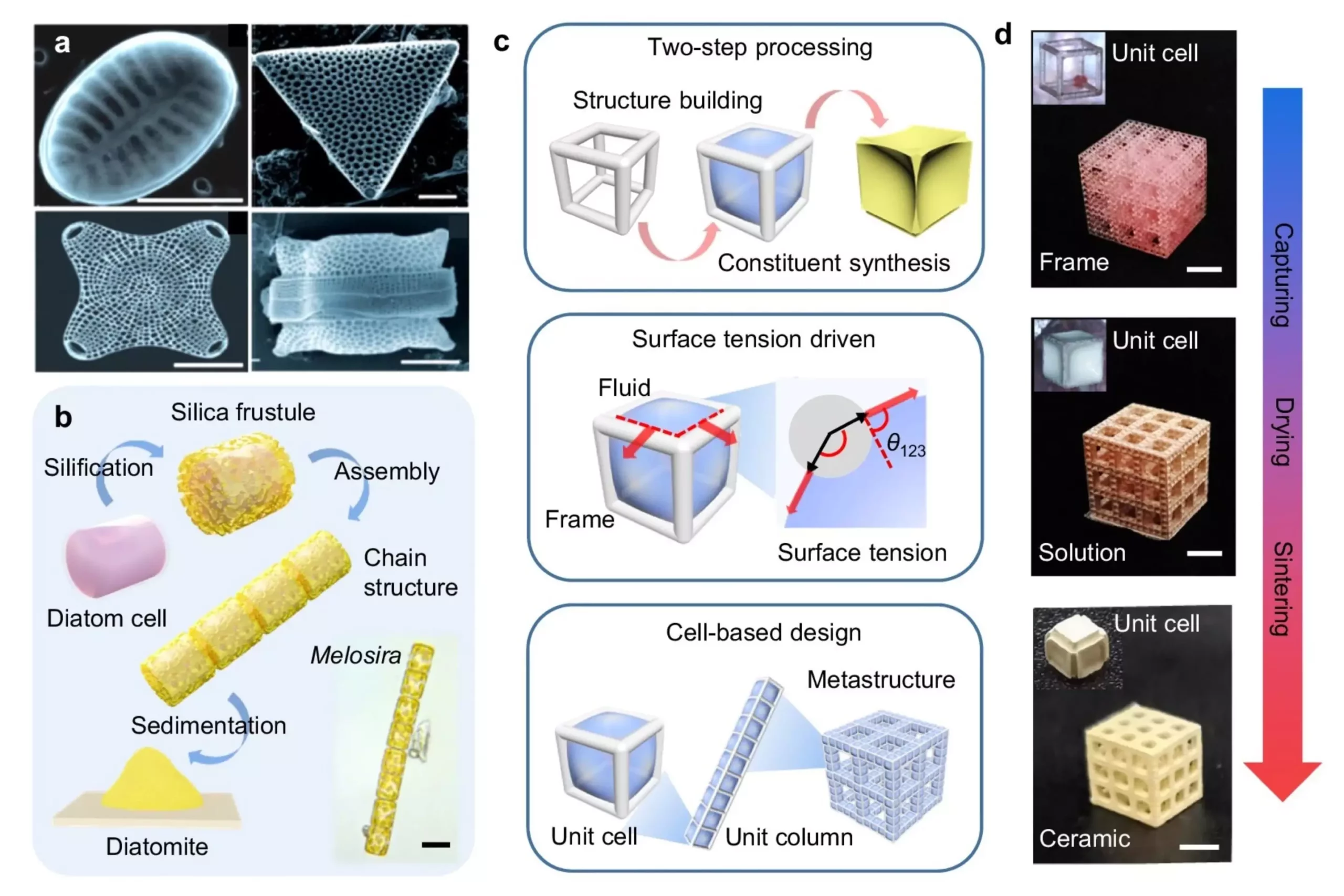In a groundbreaking study conducted by the School of Engineering at the Hong Kong University of Science and Technology (HKUST), researchers have developed a new method that promises to revolutionize the manufacturing of cellular ceramics. This innovative approach overcomes the limitations of traditional additive manufacturing (3D printing) and offers a simplified and accelerated production process for geometrically complex ceramic materials.
Cellular ceramics are widely recognized for their stable performance, erosion resistance, and long service life. These materials have diverse applications in sectors such as energy, electronics, and biomedicine. They are commonly used in robotics, solar cells, sensors, battery electrodes, and bactericidal devices. The research team, led by Associate Professor Yang Zhengbao from the Department of Mechanical and Aerospace Engineering at HKUST, envisioned a new way to fabricate cellular ceramics with programmed 3D cell-based configurations.
The surface-tension-assisted two-step (STATS) processing strategy devised by the researchers involves two key steps. First, they prepare cell-based organic lattices using additive manufacturing methods to establish the basic configurations. Then, they fill the lattice with the required precursor solution using surface tension to capture and control the liquid geometry in the cellular structures.
One major challenge faced by the researchers was controlling the liquid geometry within the cellular lattices. By leveraging the natural phenomenon of surface tension, they were able to trap and pin fluids in the prepared lattices, ensuring precision in the manufacturing process. Through theoretical and experimental investigations, the team determined the optimal geometry parameters for the architected lattices, enabling the creation of complex ceramic structures.
The STATS approach separates the ingredient synthesis from the architecture building, allowing for the programmable manufacturing of cellular ceramics with varying cell sizes, geometries, densities, meta-structures, and constituent elements. This method is applicable to both structural ceramics like Al2O3 and functional ceramics such as TiO2, BiFeO3, and BaTiO3. The researchers also demonstrated the effectiveness of the approach in studying the piezoelectric performance of cellular piezoceramics, achieving high piezoelectric constants even with high overall porosity.
Professor Yang revealed that the method was inspired by diatoms, single-celled algae known for their silica frustule structures. These structures exhibit precise morphology, shape, geometry, pore distribution, and assembly, thanks to a genetically programmed biomineralization process. By drawing inspiration from nature, the researchers were able to develop a method that enables the creation of complex ceramic architectures with high precision and programmability.
The innovative method developed by the research team at HKUST has the potential to transform the manufacturing process of cellular ceramics. By overcoming the limitations of traditional methods, this approach opens up new possibilities for the design and processing of ceramic materials, with wide-ranging applications in various industries. This novel strategy not only enhances the performance of cellular ceramics but also contributes to advancements in fields such as filters, sensors, actuators, robotics, and energy storage devices.


Leave a Reply